Oregon is among the country’s most geographically diverse states, featuring dense evergreen and mixed forests, semi-arid shrublands, high deserts, numerous bodies of water, and even volcanoes! Naturally, the wildlife is just as rich.
Although there are a myriad of native plants in Oregon, we’ve selected some of the most beautiful and unique ones. If you ever visit the Beaver State, keep an eye on the surrounding nature, as you may spot one of the below native plants.
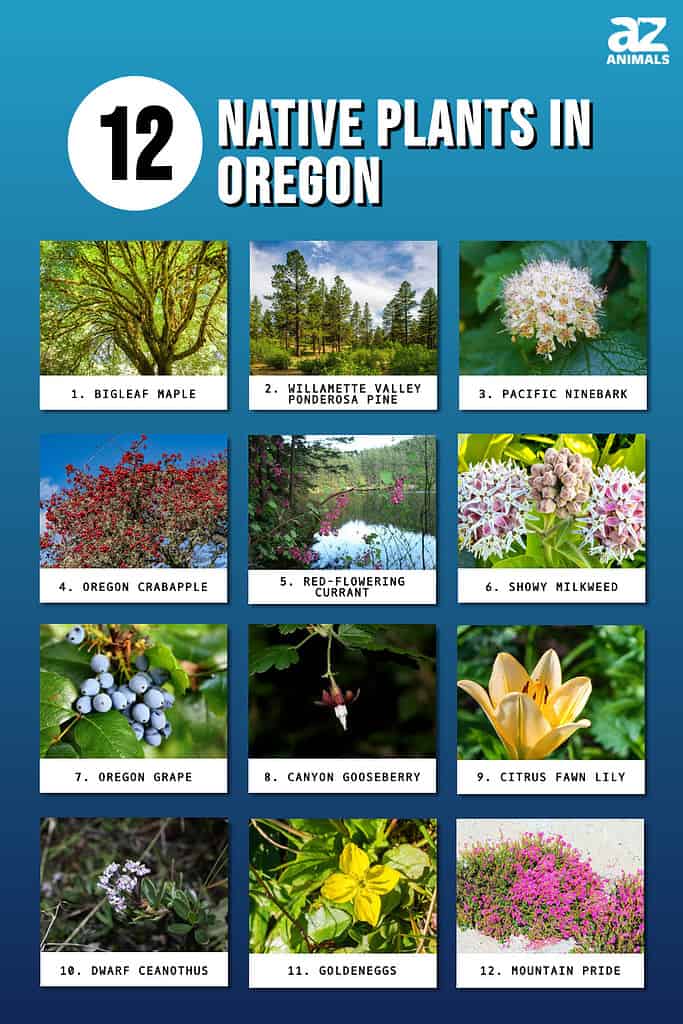
1. Bigleaf Maple

Some of the oldest and largest bigleaf maple trees reside in Oregon.
©Min C. Chiu/Shutterstock.com
| Bigleaf Maple | |
|---|---|
| Scientific name | Acer macrophyllum |
| Other common names | Oregon maple |
| Type of plant | Deciduous tree |
| Distribution | Western North America |
The bigleaf maple, also called the Oregon maple, is a deciduous tree that can grow as tall as 158 feet, although most specimens are usually 50-65 feet tall. The largest bigleaf maple in the United States is located in Lane County, Oregon, and it measures 119 feet tall and has a spread of 91 feet.
The tree blooms in spring, unraveling its greenish-yellow flowers that grow on pendulous racemes. Afterward, the bigleaf maple produces large leaves that measure 6-12 inches in diameter, turning yellow and gold during autumn.
This deciduous tree grows best in hydrated hardwood forests.
2. Willamette Valley Ponderosa Pine
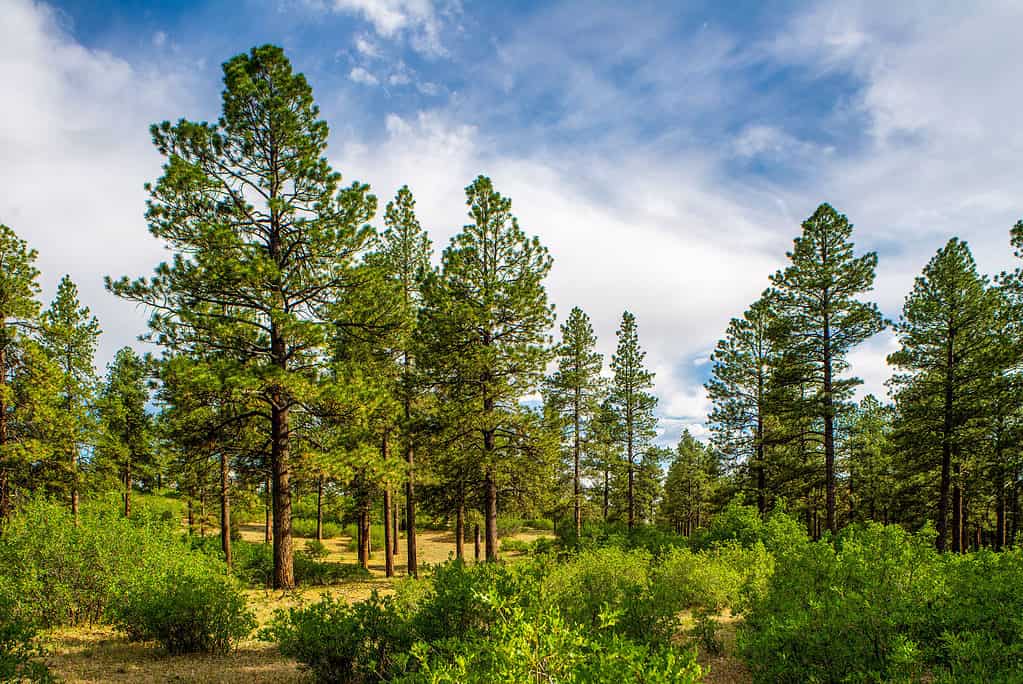
The
Pinus ponderosaevergreen tree is native to the Willamette Valley in Oregon.
©Dominic Gentilcore PhD/Shutterstock.com
| Willamette Valley Ponderosa Pine | |
|---|---|
| Scientific name | Pinus ponderosa |
| Type of plant | Evergreen tree |
| Distribution | The Willamette Valley in Oregon |
The Pinus ponderosa evergreen tree is native to the Willamette Valley in Oregon. It can survive its dry summers and wet winters. However, this tree is adapted only to the habitats on the valley floor.
It can grow as large as 230 feet tall and produces deep green needles that measure around 6-10 inches long. Its brown cones smell like vanilla.
If you’re planning to grow this tree, you should know it thrives in well-drained soils and needs lots of space to spread naturally. Moreover, it’s considered drought-resistant.
3. Pacific Ninebark
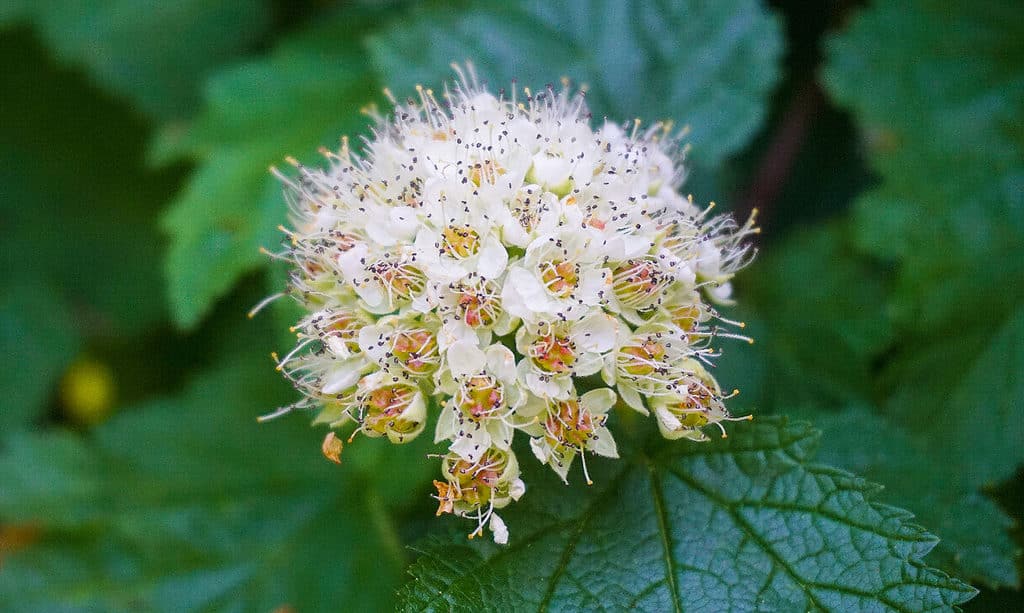
The Pacific ninebark is a shrub in the rose family that grows up to 8 feet tall.
©lenic/Shutterstock.com
| Pacific Ninebark | |
|---|---|
| Scientific name | Physocarpus capitatus |
| Other common names | Tall ninebark |
| Type of plant | Deciduous shrub |
| Distribution | Western North America |
The Pacific ninebark is a shrub in the rose family that grows up to 8 feet tall. The deciduous plant has reddish-gray bark with irregular thin layers and maple-like leaves that are dark green and shiny on top.
The shrub blooms in late spring. The white flowers with numerous red-tipped stamens. The Pacific ninebark fruit is a red pod that eventually becomes dry and brown.
Since it provides shade for small mammals and serves as a bird nesting site, the Pacific ninebark is considered of great ecological importance.
4. Oregon Crabapple
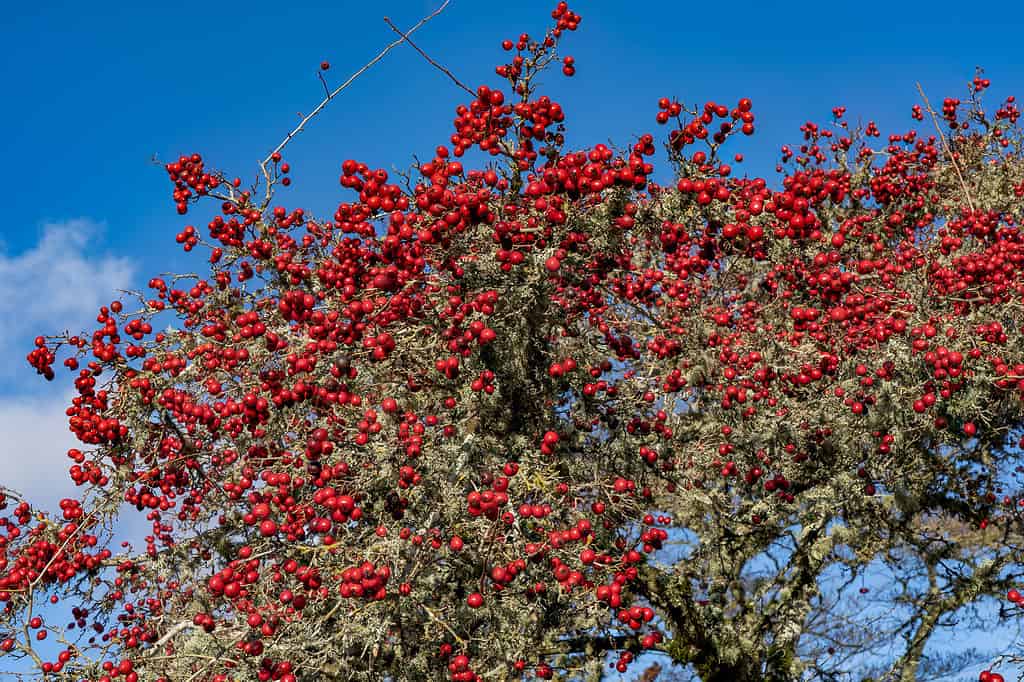
The Oregon crabapple grows in the wet soils found in poorly drained areas along the Pacific Coast.
©Bob Pool/Shutterstock.com
| Oregon Crabapple | |
|---|---|
| Scientific name | Malus fusca |
| Other common names | Pacific crabapple |
| Type of plant | Deciduous tree |
| Distribution | Western North America |
The Oregon crabapple grows in the wet soils found in poorly drained areas along the Pacific Coast. It thrives in temperate coniferous forests alongside bigleaf maples, willows, and red alders.
The tree can grow up to 43 feet tall and have a 10-inch-thick trunk. Its leaves are dark green on top and pale underneath, and they become bright orange or red when fall sets in.
In spring, the Oregon crabapple features white or pale pink flowers, while the fruits are yellow-green or red apple-shaped pomes. They have a sour flavor and can be eaten raw or added to jams or jellies.
5. Red-Flowering Currant
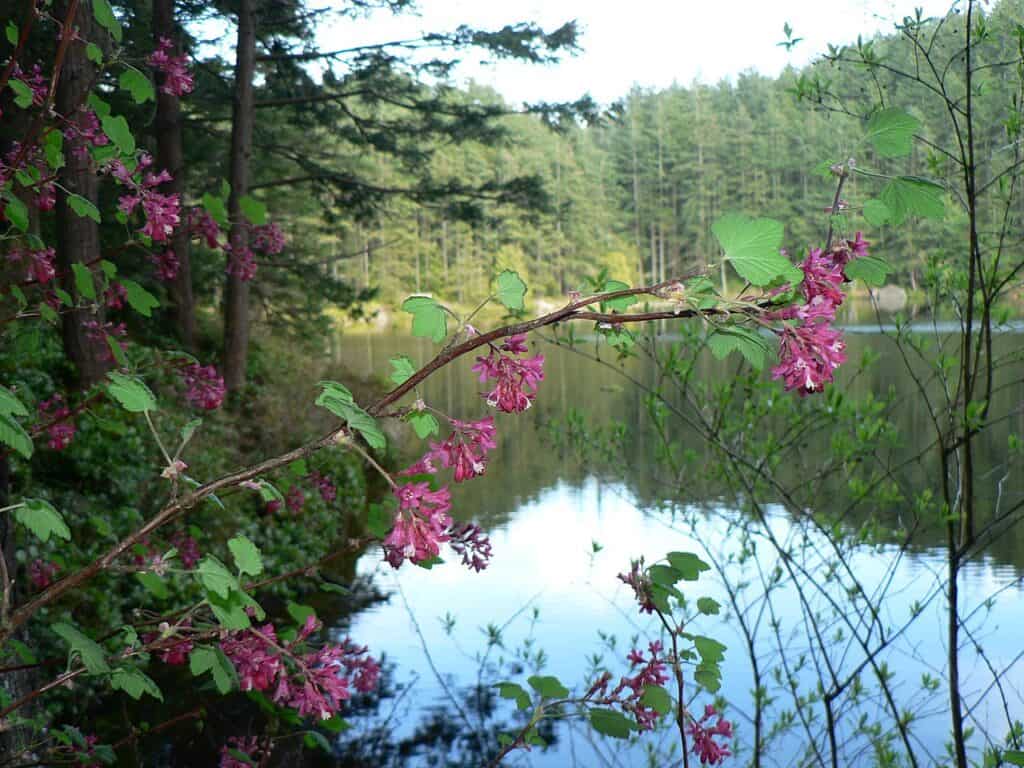
The red-flowering currant is a deciduous shrub native to western North America.
©Walter Siegmund / CC BY-SA 3.0, , via Wikimedia Commons – License
| Red-Flowering Currant | |
|---|---|
| Scientific name | Ribes sanguineum |
| Other common names | Redflower currant |
| Type of plant | Deciduous shrub |
| Distribution | Western United States and Canada |
Growing up to 10 feet tall and having a dark brown-gray bark, the red-flowering currant is a deciduous shrub native to western North America. Its alternately arranged leaves give off a resinous scent during spring. Deer and elk often eat them.
Flowers appear in early spring and grow on dangling racemes. They have five pink or red petals. The flowers are a major attraction for hummingbirds, butterflies, and moths. The fruits are dark purple and have the form of oval berries.
Like the shrub’s flowers and leaves, the berries are of ecological importance, as they serve as a food source for small mammals and birds.
6. Showy Milkweed

The showy milkweed plant has pointed, elongated leaves that are oppositely arranged on their stalks.
©Pinky Purple/Shutterstock.com
| Showy Milkweed | |
|---|---|
| Scientific name | Asclepias speciosa |
| Type of plant | Perennial plant |
| Distribution | Western North America |
This plant species serves as a food source and a habitat for the monarch butterfly. It is primarily found in open woodland areas, along streams and roadsides, and on dry slopes.
The showy milkweed plant has pointed, elongated leaves that are oppositely arranged on their stalks. It blooms from May to August and produces beautiful, unique pinkish-purple flowers. The fruit is a 4-inch-long follicle filled with flat oval seeds. Although many other species in the Asclepias genus are poisonous, showy milkweed seed pods and leaves are edible if boiled.
7. Oregon Grape
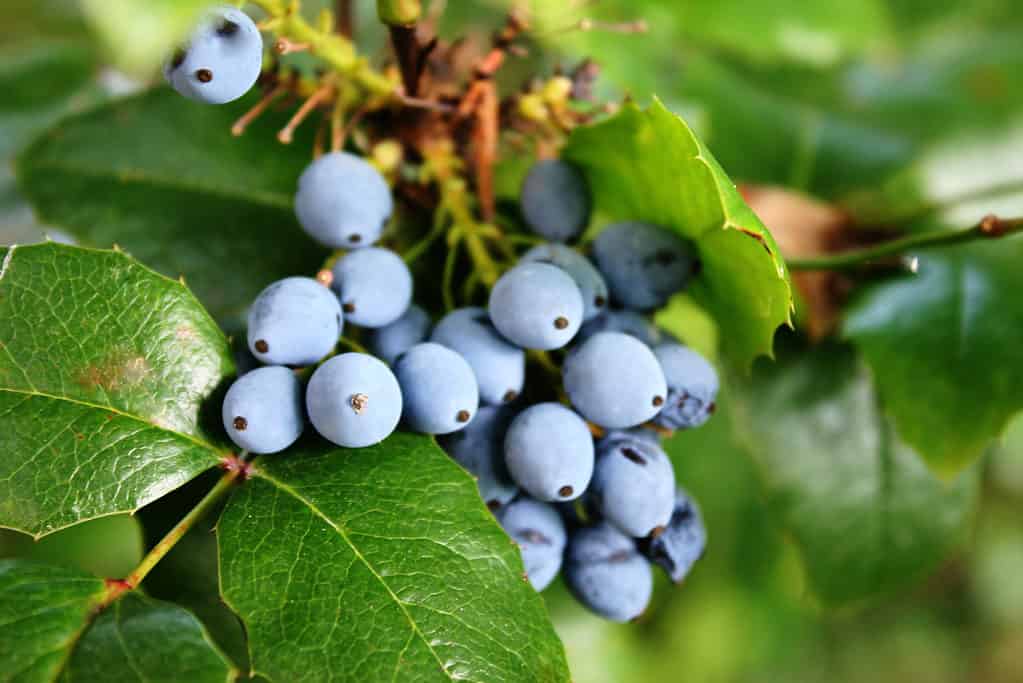
The Oregon grape produces dark blue berries that can be eaten raw.
©Natalka De/Shutterstock.com
| Oregon Grape | |
|---|---|
| Scientific name | Mahonia aquifolium |
| Other common names | Holly-leaved barberry |
| Type of plant | Flowering evergreen shrub |
| Distribution | North American West |
The Oregon grape is the state flower of Oregon. It’s a flowering evergreen shrub that can reach 10 feet tall and 5 feet wide. The plant has thick twigs and stems, while the pinnate, leathery leaves resemble holly leaves. The shrub flowers in late spring, enriching its appearance with yellow flowers that grow on dense clusters.
The Oregon grape produces dark blue berries that can be eaten raw. People often add them to jellies or juices. However, it’s recommended to consume the berries in small quantities due to their tart taste.
8. Canyon Gooseberry
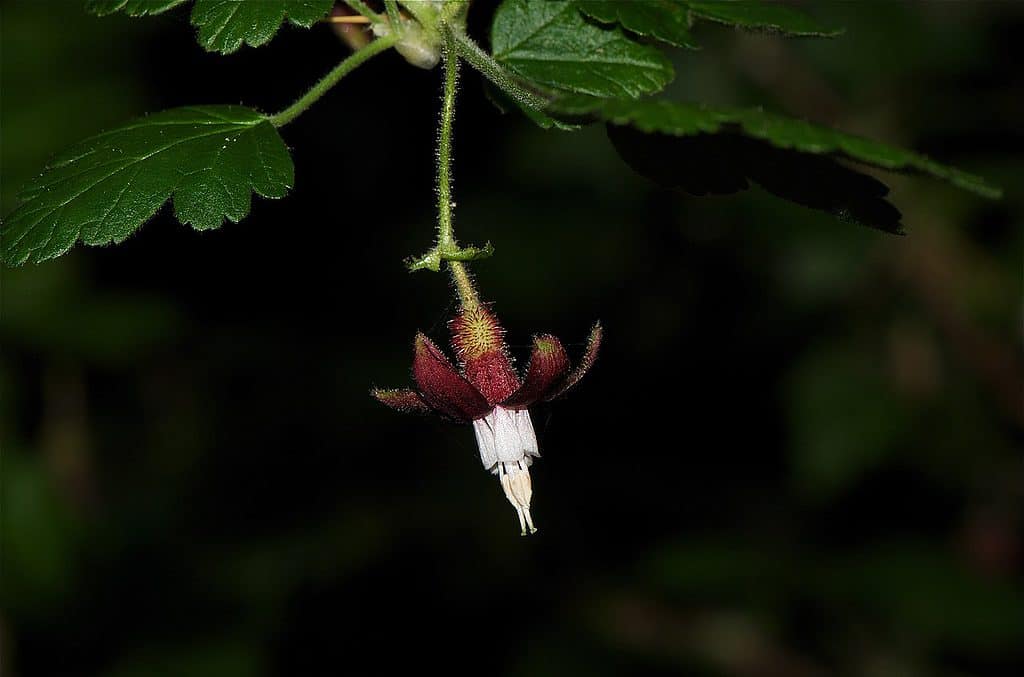
The canyon gooseberry shrub is a deciduous currant growing across from California’s low-elevation mountains north to Oregon.
©jkirkhart35 / CC BY 2.0, via Wikimedia Commons – License
| Canyon Gooseberry | |
|---|---|
| Scientific name | Ribes menziesii |
| Type of plant | Deciduous shrub |
| Distribution | California and Oregon |
The canyon gooseberry shrub is a deciduous currant growing from California’s low-elevation mountains north to Oregon. It has rounded, hairy leaves and distinctive flowers whose sepals are folded backwards along the flower’s length. The white petals, on the other hand, extend forward.
The purple gooseberries produced by this deciduous shrub are edible, although the plant’s spines prevent people from collecting them. Despite that, many people choose this shrub as an ornamental plant for gardening and landscaping.
9. Citrus Fawn Lily
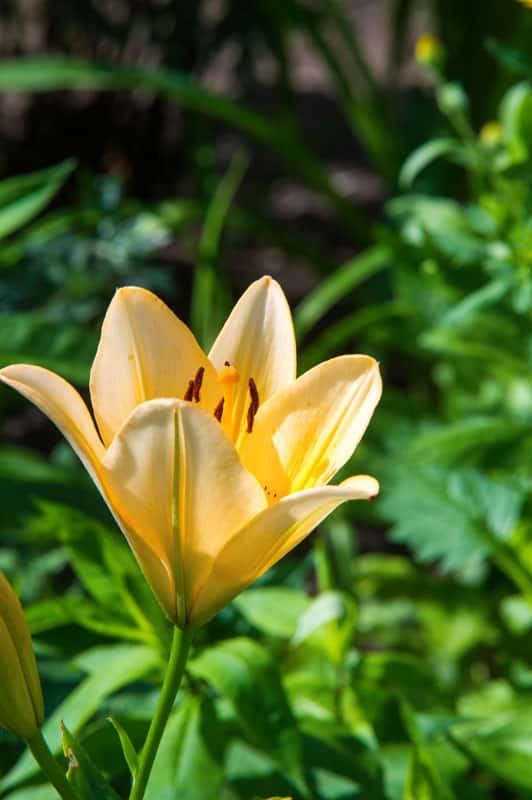
The citrus fawn lily blooms in early spring.
©Sergei Mishchenko/Shutterstock.com
| Citrus Fawn Lily | |
|---|---|
| Scientific name | Erythronium citrinum |
| Other common names | Cream fawn lily |
| Type of plant | Flowering plant |
| Distribution | The Klamath Mountains |
While the other species in the Erythronium genus are some of the most common in North America and Eurasia, the Erythronium citrinum grows only in the Klamath Mountains, which range from northwestern California to southwestern Oregon.
The citrus fawn lily blooms in early spring. Its flowers grow on 6- to 8-inch-tall stems. They are pale yellow or creamy white and have a yellow center. When the flower ages, the tepal tips become pink.
The plant thrives in serpentine soils and is found on shrubby slopes and in open woods.
10. Dwarf Ceanothus
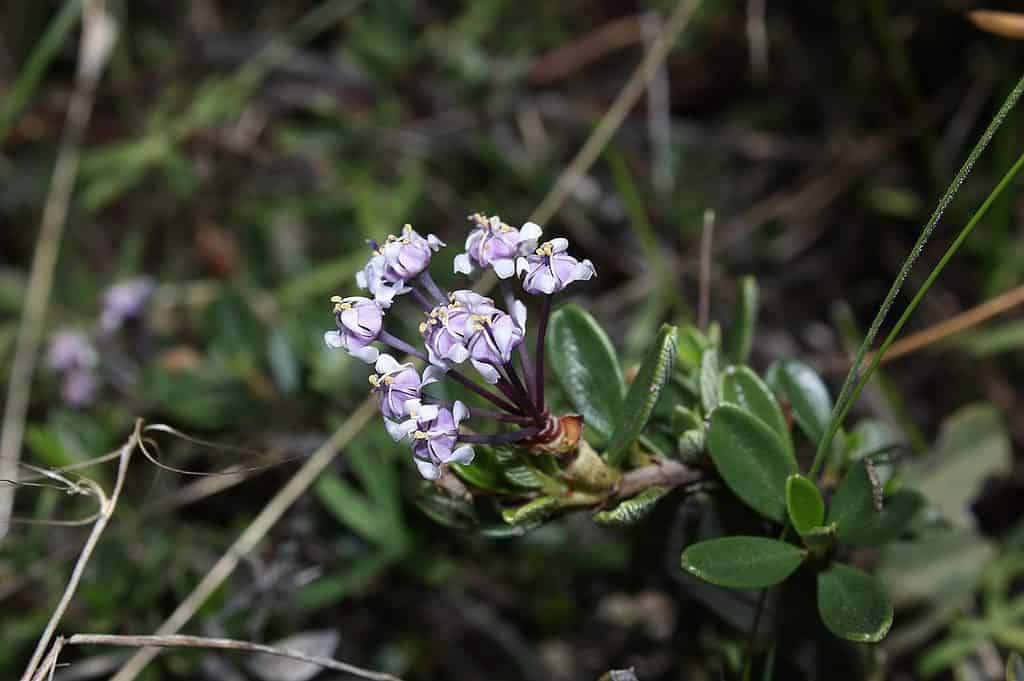
The dwarf ceanothus is a species in the
Rhamnaceaefamily.
©Walter Siegmund / CC BY-SA 3.0 – License
| Dwarf Ceanothus | |
|---|---|
| Scientific name | Ceanothus pumilus |
| Other common names | Siskiyou mat |
| Type of plant | Dwarf shrub |
| Distribution | Oregon and California |
Like the citrus fawn lily, the dwarf ceanothus grows only in southern Oregon and northern California in coniferous forests and chaparral shrublands. It’s a species in the Rhamnaceae family, often called the buckthorn family.
This dwarf shrub can spread up to 8.2 feet white. Its oppositely arranged leaves are thick and firm, pale and hairy on the underside, and hairless, dark green on the top. Dwarf ceanothus flowers can be purple, white, or blue and grow in umbel-like clusters.
11. Goldeneggs
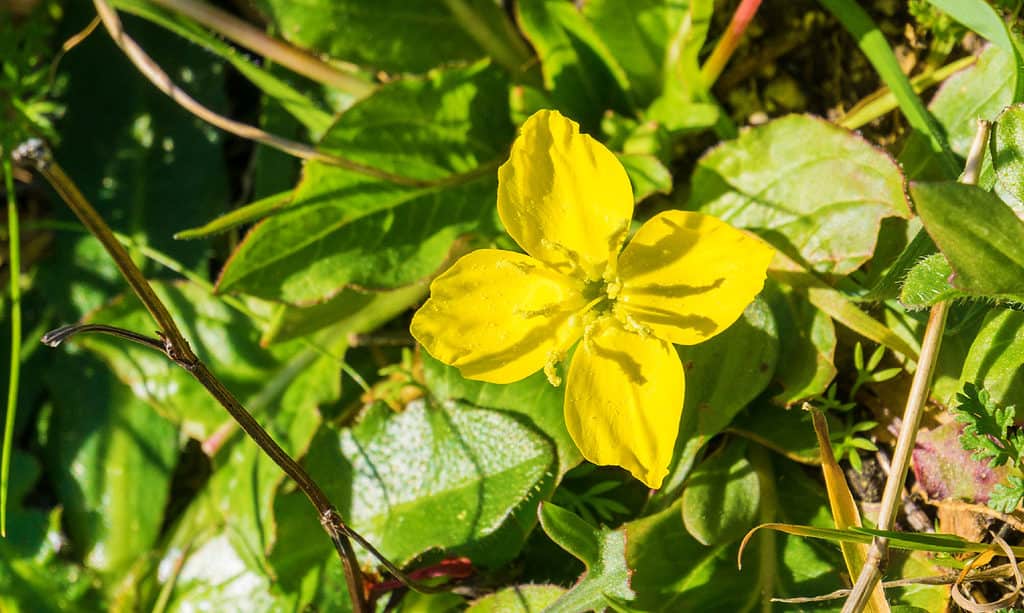
Goldeneggs thrives in clay soil and produces long, alternate leaves that are feather-shaped.
©iStock.com/Sundry Photography
| Goldeneggs | |
|---|---|
| Scientific name | Taraxia ovata |
| Other common names | Sun cup |
| Type of plant | Perennial plant |
| Distribution | Oregon and California |
Yet another plant native to Oregon and California only, the Taraxia ovata, or the goldeneggs plant, is a tap-rooted perennial, meaning it has a large, central root that produces other roots laterally.
The plant thrives in clay soil and produces long, alternate leaves that are feather-shaped. Its yellow or white flowers bloom on erect stems, producing four distinctive, widely opened petals.
12. Mountain Pride
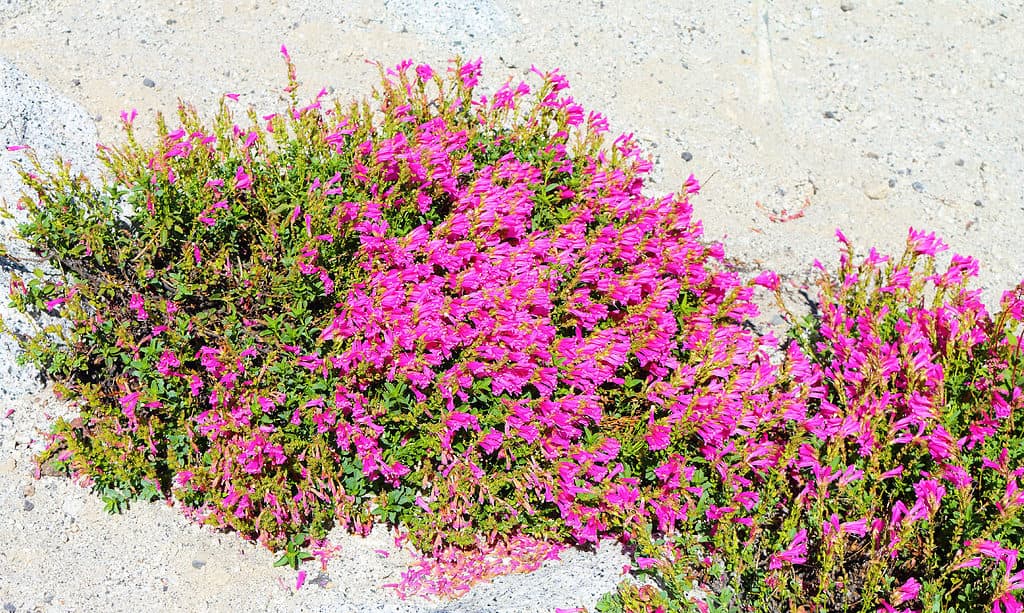
The mountain pride penstemon has a mat-like form, growing only around 12 inches tall.
©Judith Lienert/Shutterstock.com
| Mountain Pride | |
|---|---|
| Scientific name | Penstemon newberryi |
| Other common names | Newberry’s penstemon |
| Type of plant | Penstemon flowering plant |
| Distribution | California, Oregon, and Nevada |
Mountain pride grows only in northern California, Oregon, and Nevada. It is found at high elevations, preferring rocky habitats. The mountain pride penstemon has a mat-like form, growing only around 12 inches tall. It has oblong or oval leaves and bright pink flowers that are funnel-like or tubular.
It is a popular ornamental plant primarily because it can resist various conditions. However, the key to providing it with the perfect growing environment is planting it in a spot where it can receive direct sunlight for at least six hours a day.
Summary of 12 Native Plants in Oregon
Here’s a recap of the dozen plants we looked at that are native to the state of Oregon.
| Number | Plant | Scientific Name | Type of Plant |
|---|---|---|---|
| 1 | Bigleaf Maple | Acer macrophyllum | Deciduous tree |
| 2 | Willamette Valley Ponderosa Pine | Pinus ponderosa | Evergreen tree |
| 3 | Pacific Ninebark | Physocarpus capitatus | Deciduous shrub |
| 4 | Oregon Crabapple | Malus fusca | Deciduous tree |
| 5 | Red-Flowering Currant | Ribes sanguineum | Deciduous shrub |
| 6 | Showy Milkweed | Asclepias speciosa | Perennial plant |
| 7 | Oregon Grape | Mahonia aquifolium | Flowering evergreen shrub |
| 8 | Canyon Gooseberry | Ribes menziesii | Deciduous shrub |
| 9 | Citrus Fawn Lily | Erythronium citrinum | Flowering plant |
| 10 | Dwarf Ceanothus | Ceanothus pumilus | Dwarf shrub |
| 11 | Goldeneggs | Taraxia ovata | Perennial plant |
| 12 | Mountain Pride | Penstemon newberryi | Penstemon flowering plant |
The photo featured at the top of this post is © Natalka De/Shutterstock.com
Sources
- Oregon.gov, Available here: https://www.oregon.gov/odf/documents/aboutodf/nativetreesplants.pdf
- Wikipedia, Available here: https://en.wikipedia.org/wiki/List_of_native_Oregon_plants
- Native Plant Society of Oregon, Available here: https://corvallis.npsoregon.org/OSU%20Gardening%20with%20Oregon%20Native%20Plants.pdf
Thank you for reading! Have some feedback for us? Contact the AZ Animals editorial team.






